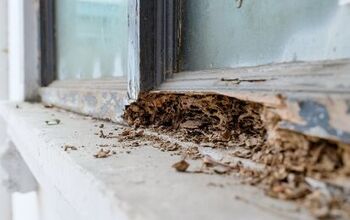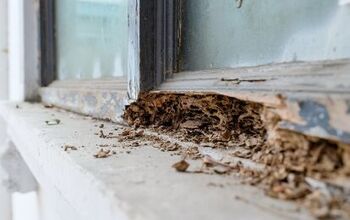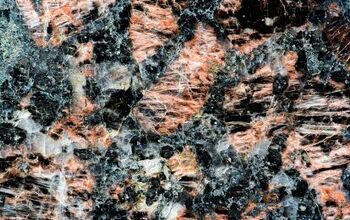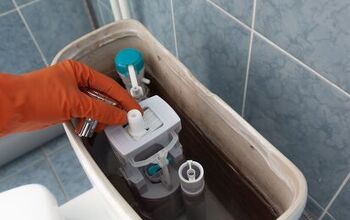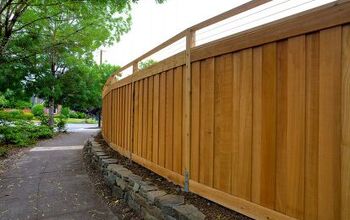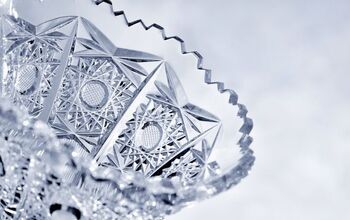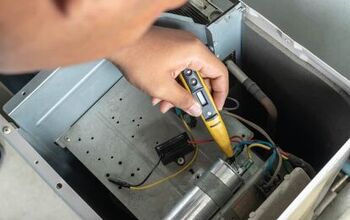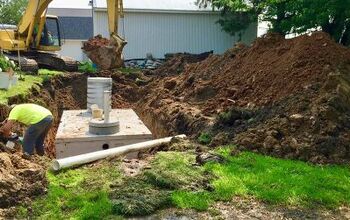How To Prevent Termites In Your Home

Termites can cause devastating damage that can cost tens of thousands of dollars in damage. Nothing can prepare a homeowner for how it feels to discover termites and spend a fortune to get rid of them. That’s why you may understandably wonder how to prevent termites in your home.
Remove dead trees and wood debris from your property to keep termites away from your house. You can also prevent termites in your home if you reduce foundation and crawlspace moisture. It’s worth calling a pest control service to spray your home with termiticides and set up an in-ground bait station to kill termites.
In-ground bait stations are effective because in some cases, they can eventually kill a whole colony. Call a pest control service right away if you suspect your home has a termite infestation. Follow along as we explore how to prevent termites in your home.
How To Keep Termites Away From Your House
1. Remove Dead Trees
While termites can feast on living trees, they prefer dead ones. Dead trees attract termites who can devour them until they’re ready to move on to something else. In some cases, they move on to other trees whereas others move on to nearby structures.
That can include your house, shed, detached garage, or gazebo. Removing dead trees on your property can help prevent termites from reaching your home. This can also reduce the risk of a tree falling on your house or car.
Late winter is the best time to cut down a dead tree, but there’s no reason to wait, if it’s an emergency. That’s because trees go dormant during the winter in most climates. The closer the dead tree is to your house, the more likely termites will invade your home.
2. Keep Wood And Mulch Away From Your Home
Do you have mulch that contains wood on the soil by your home’s exterior walls? If so, that may entice termites to target your home. Some people even have old lumber in their yard near their homes for practical and decorative purposes.
Any wood that is too close to your house can create a big risk of termites. Wooden retaining walls can also attract termites, and so aren’t worth the risk. Ideally, you should keep the wood in your yard at least 4” to 6” away from your house.
That includes the mulch that covers the soil beds near your home. The mixture of wood, soil, and moisture is enough to attract termites. Never store firewood against your home’s exterior walls, or you may invite termites inside.
3. Protect Your Foundation From Moisture
Moisture near your foundation is a recipe for disaster in many ways. First, this can cause structural damage that can cost thousands of dollars to fix. Second, foundation moisture can attract termites to your home.
That’s because a moist foundation typically has cracks. Termites can access the foundation via cracks in your home’s exterior walls. From there, they can enter your home through cracks in the foundation and cause significant damage.
You can avoid most of this if you prevent foundation damage in the first place. Extend your gutter downspouts to stop water from weakening the foundation. Patch leaks in your exterior walls and install a waterproof barrier around your foundation.
4. Keep Your Crawlspace Dry
Termites love a crawlspace because it contains lots of wood, and sometimes, it is damp. It’s also the perfect environment for termites to reproduce. After all, they don’t have to worry about predators, and they are surrounded by food sources in your crawlspace.
You can largely keep termites out of your crawlspace if you wrap the space with a vapor barrier. Crawlspace encapsulation costs $5,500 on average, but it can cost as little as $1,000. The condition and size of the crawlspace largely determine how much it costs.
It’s also important to patch leaks in your crawlspace to keep termites and moisture out. You can also use a dehumidifier to reduce moisture in your crawlspace if encapsulation is too expensive.
5. Use A Chemical Treatment
Today, pest control services use many treatments to create chemical barriers against termites. Termidor is one of the most popular termiticides. Longevity is the biggest benefit of Termidor, as it can protect your home against termites for up to 10 years.
You can choose between many termiticides, but you must follow the instructions. It’s much easier to achieve great results if you dig a trench and spray the termiticide into it. You must also mix most termiticides with water before applying them.
Make sure you use exactly the amount of water the directions call for. Otherwise, you may weaken the effects of the termiticide and render it useless. It’s worth hiring a pest control service if you are worried about doing the application yourself.
6. Set Up A Bait Station
Bait stations are among the best ways to prevent termites in your home. They contain wood that is tainted with an insecticide that termites will ingest. Upon leaving, they will spread the insecticide among their colony and kill everything.
This is an effective form of termite control, as you can take out a large amount of them at once. It can also save you the trouble of treating your home with chemicals. Some people feel uncomfortable with having chemicals inside their homes if they have pets and small children.
You can expect to spend between $1,000 and $3,000 to set up an in-ground termite bait station. This is best done by pest control professionals, as it is difficult.
How Long Does It Take For Termites To Cause Damage?
It typically takes at least 3 years for termites to cause significant damage. However, you may notice signs of damage long before then, as it doesn’t take long for them to chew through wood. That said, 3-5 years is typically the time frame before termites can cause serious structural damage.
The damage comes in stages as the termite colony’s population grows. Naturally, a larger termite colony can destroy a house sooner than a smaller colony. Pay attention and look for signs of termites, like mud tubes, disembodied wings, and termite droppings.
Termite droppings typically resemble sawdust, so you may not identify them right away. However, they are often accompanied by damaged wood that can tell you termites are to blame. Call a pest control service right away if you notice signs of termite damage and droppings.
Summing It Up
The best way to prevent termites in your home is to remove dead trees and keep chopped wood away from your house. Try not to put mulch too close to your home’s exterior walls as it can attract termites as well. Keep your crawlspace dry, install a vapor barrier around your foundation, and treat your home’s perimeter with termiticides to keep termites away.
Related Guides:

Nick Durante is a professional writer with a primary focus on home improvement. When he is not writing about home improvement or taking on projects around the house, he likes to read and create art. He is always looking towards the newest trends in home improvement.
More by Nick Durante










